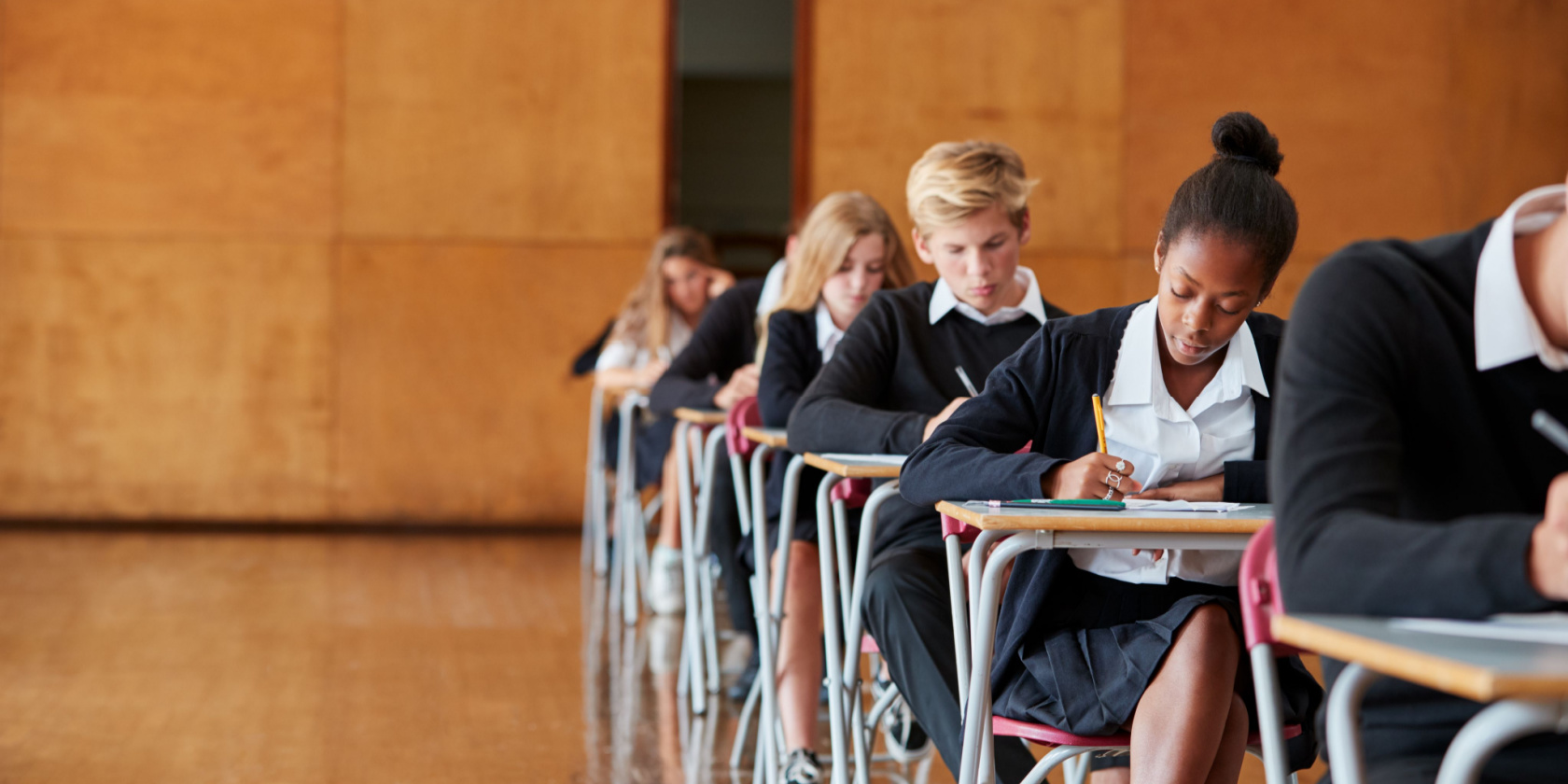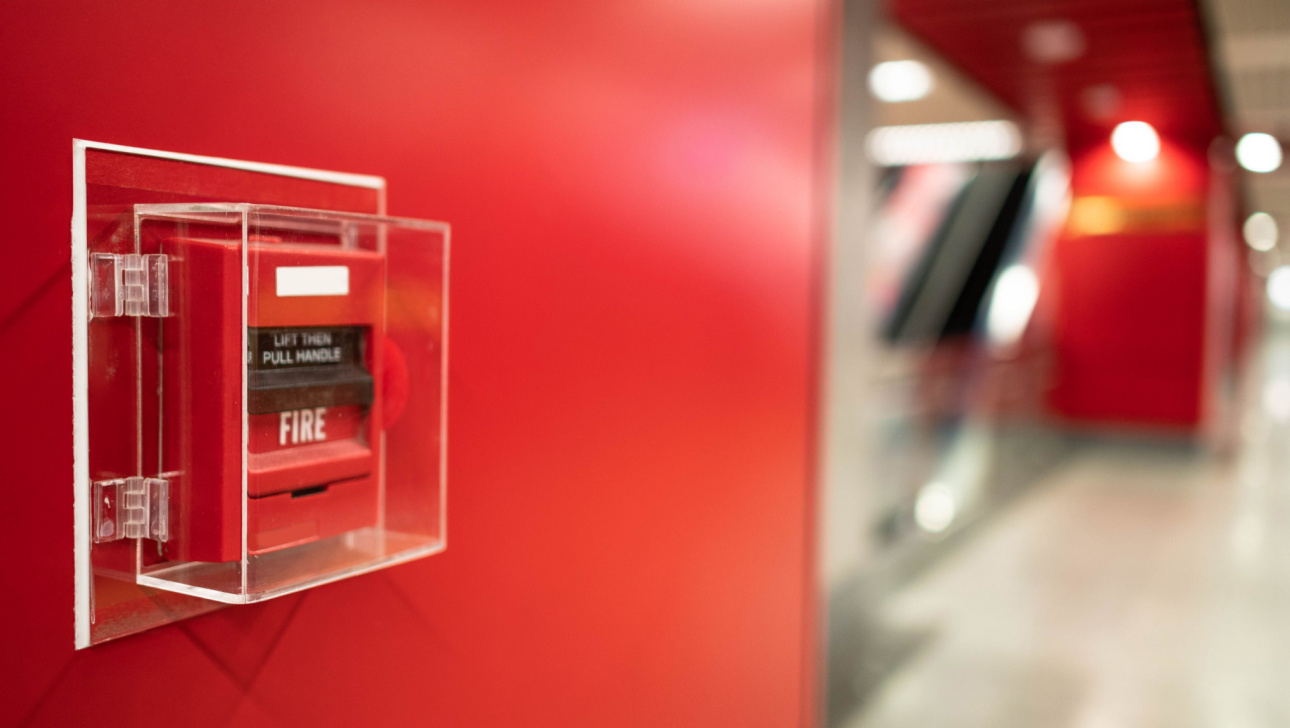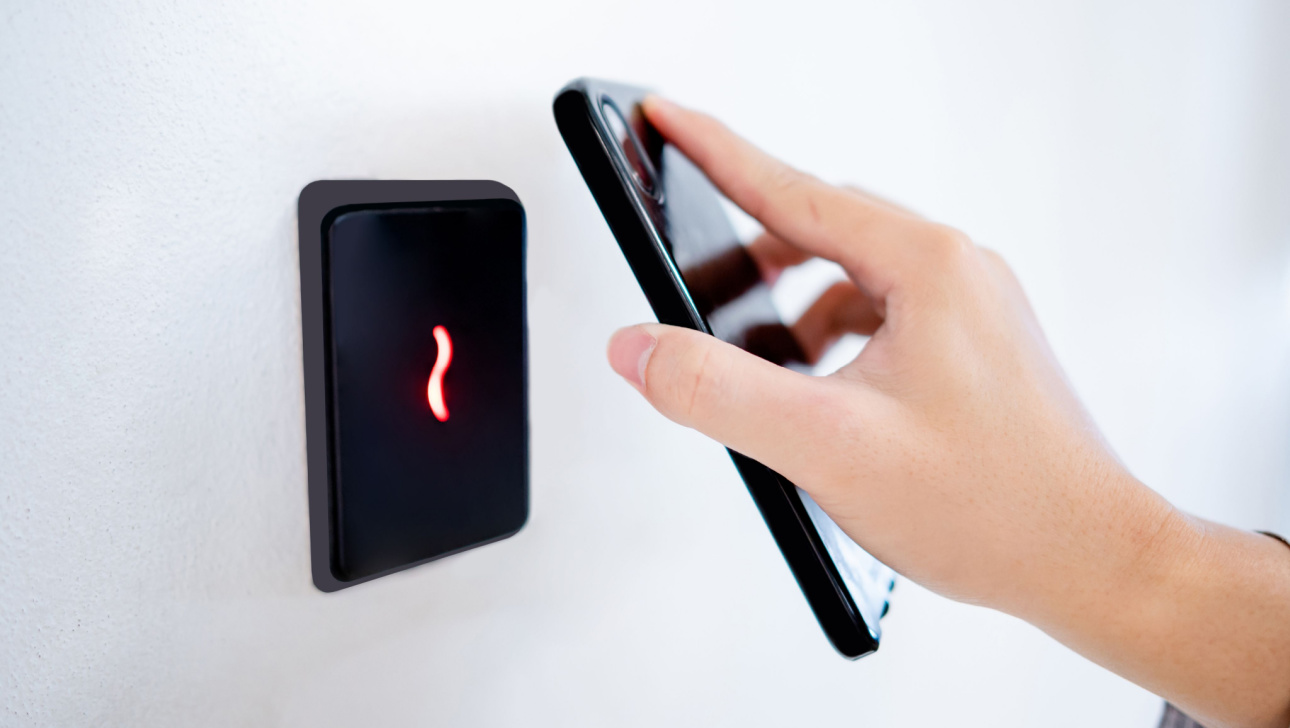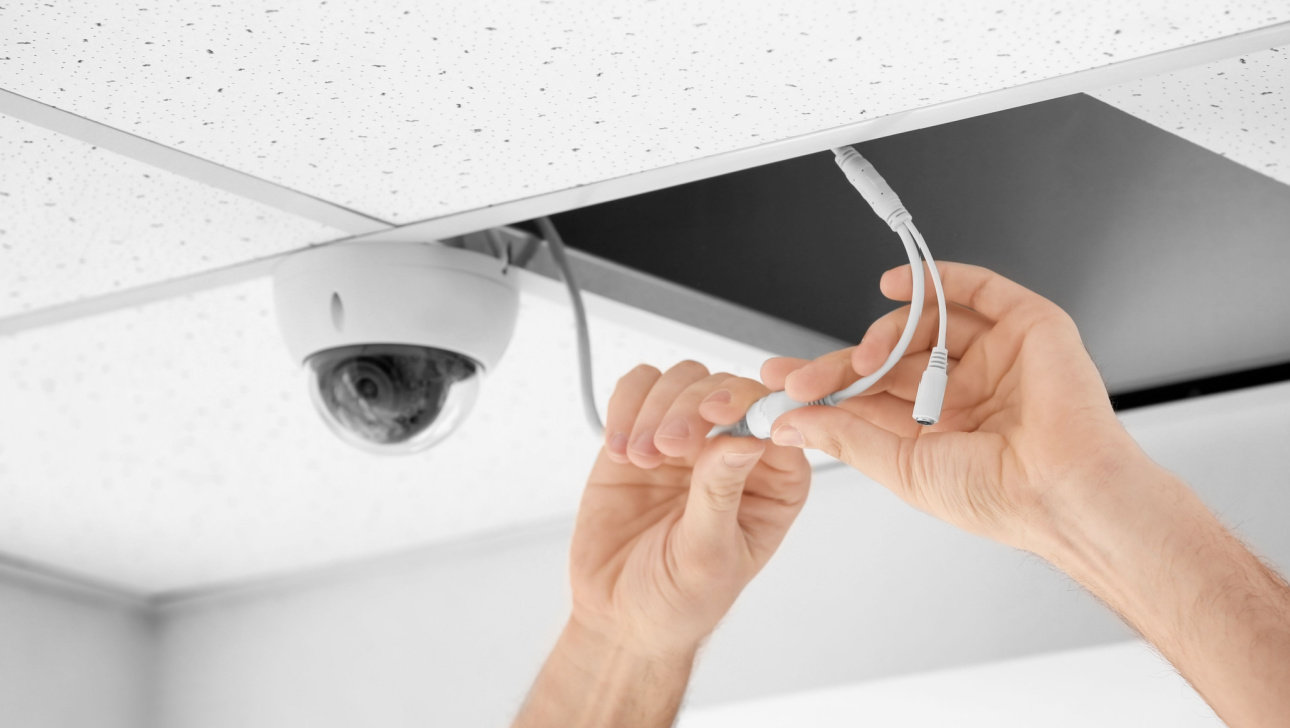Security in Schools and Colleges: Out with the Old, In with the new

Schools and educational facilities in Ireland are responsible not just for teaching students, but for safeguarding their welfare too. As well as staying on top of their current challenges for security and safety, it is important to keep up to date with security trends and various regulation changes.
In this article, we will discuss the key factors to consider when adopting new technology and professional services to improve and future-proof educational security.
We’ll cover:
- Common challenges to security in schools, colleges, and university campuses
- Staying up to date with Fire detection in your education facility
- Maintaining Smooth and Safe Processes for Access Control and Visitor Management
- Proactively Preventing Crime with CCTV and Intruder Alarm Systems
- The need to keep value in mind when maintaining or updating your security systems
- How to get started in providing long-term security to your educational facility

Common challenges to security in schools, colleges, and university campuses
One of the biggest challenges to security for educational facilities is that they are often large and complex sites, whether you’re securing a village primary school or busy urban secondary school or college.
This often requires a multi-faceted approach to planning your strategy for security systems (like CCTV Video Systems and Access Control) and systems for life safety (like Fire Detection).
Here are some of actions that your educational institution can do to improve security:
- Regular Security Assessment: This includes regular assessment of security capabilities to identify and address vulnerabilities. This includes cyber, as well as physical security measures.
- Physical Security Measures: Implement physical security measures such as access control systems, security cameras, and intruder alarms. These measures can help to deter unauthorized access to campuses and buildings, and can also help to identify and apprehend perpetrators of crimes.
- Cyber Security Systems: Invest in cyber security solutions such as firewalls, intrusion detection systems, and data encryption. These solutions can help to protect sensitive data from cyber-attacks.
- Raise Awareness: Raise awareness of security issues among students and staff. This can be done through education and training programs, as well as through regular communication about security threats and procedures.
- Provide Training: Provide training on how to report and respond to security incidents. This training should cover topics such as how to identify and report suspicious activity, as well as how to respond to a variety of security incidents, such as active shooters.
One of the biggest challenges is switching from old or outdated security and life safety methods to new ones. Many schools and colleges are also looking to improve efficiency by consolidating their various systems under one roof with a single service provider.
With all that said, we’ll now discuss some of the main areas of concern when it comes to protecting the safety and security of your educational facility in the long term.

Staying up to date with Fire Detection
The safest way to deal with fire is to prevent it.
Life safety systems like fire detection and prevention are a legal requirement, and it isn’t just ensuring you have the right systems working on your site. The National Directorate for Fire and Emergency Management (NDFEM) is the body that regulates fire and safety in Ireland. Moreover, it is responsible for developing and implementing national policy and standards on fire and safety.
The NDFEM framework for fire safety in Ireland is a comprehensive approach to fire safety that covers all aspects of fire prevention, protection, and response. The framework is based on the following principles:
- Risk assessment: The first step in fire safety is to identify and assess the risks of fire. This includes identifying the potential ignition sources, the materials that could burn, and the people who could be at risk.
- Prevention: Once the risks have been identified, measures can be taken to prevent fires from starting. This includes things like providing fire extinguishers and smoke alarms, and educating people about fire safety.
- Protection: If a fire does start, there need to be measures in place to protect people and property. This includes things like fire doors and sprinklers, and evacuation plans.
- Response: If a fire does break out, fire and rescue services need to be able to respond quickly and effectively. This includes having well-trained firefighters and the right equipment.
The NDFEM framework also places a strong emphasis on fire safety education and training. The NDFEM provides training to fire and rescue services, and also works to raise awareness of fire safety among the public.
The main points of the NDFEM framework for fire safety are:
- Fire safety is everyone's responsibility.
- Fire safety should be integrated into all aspects of business and community planning.
- Fire safety should be risk-based.
- Fire safety should be proactive, not reactive.
- Fire safety should be holistic, covering prevention, protection, and response.
In addition to the NDFEM, there are a number of other bodies that play a role in fire and safety in Ireland. These include:
- The Fire Brigades Union (FBU)
- The Association of Chief Fire Officers of Ireland (ACFOI)
- The Local Government Management Agency (LGMA)
- The Irish Fire Safety Association (IFSA)
Record keeping of regular testing and maintenance is also required. This is important to ensure that all fire safety systems are working properly.
Ultimately, your school or college needs to ensure that everything is in place for a fast and safe response in the event of a fire. This includes having a fire safety plan in place, training staff on how to use fire safety equipment, and regularly testing and maintaining fire safety systems.
Fire safety must be considered when you make any changes to your building(s). This includes changes to the layout of the building, the materials used in construction, and the type of activity that takes place in the building.
Fire regulations are also prone to change, so it is important to ensure you’re in the know. The NDFEM website is a good resource for keeping up to date with the latest fire safety regulations.
Here's a helpful guide on understanding some of the main legal requirements and who is responsible:
- The Fire Services Act 1981 is the main piece of legislation governing fire safety in Ireland.
- The Safety, Health and Welfare at Work Act 2005 places a duty on employers to ensure the safety of their employees, including from the risk of fire.
- The Fire Safety (Workplace) Regulations 2007 set out specific requirements for fire safety in workplaces.
- The Fire Safety (Schools) Regulations 2006 set out specific requirements for fire safety in schools.
- The Fire Safety (Colleges and Universities) Regulations 2006 set out specific requirements for fire safety in colleges and universities.
The person responsible for fire safety in a school, college, or university campus is the principal or head of the institution. However, all staff have a role to play in fire safety.
By following the NDFEM framework for fire safety and the relevant legislation, schools, colleges, and university campuses in Ireland can help to ensure the safety of students and staff.
Introducing Smarter Fire Alarm Management Systems
Maintaining a fire detection system, especially older ones, can entail unpredictable and costly efforts. Additionally, keeping track of routine tests through paperwork or spreadsheets can become burdensome. These challenges can be simplified by implementing a Fire Alarm Management System (FAMS).
FAMS modules can be seamlessly integrated into most modern fire detection systems, offering significant benefits for those looking to upgrade outdated systems or extend the longevity and effectiveness of newer ones. They are designed to alert users to issues or faults promptly and automatically record data from routine tests.
This eliminates the need for manual management, streamlining the process and reducing the potential downtime caused by a malfunctioning system. Furthermore, it enables quicker intervention by engineers, ultimately extending the system's operational lifespan.
If you are interested in incorporating a Fire Alarm Management System for your educational facility, we encourage you to Contact Us.

Maintaining Smooth and Safe Processes for Access Control and Visitor Management
Schools and colleges have a unique challenge when it comes to access control and visitor management. They need to manage a large number of people with different levels of access, and they need to do so in a way that protects the safety and well-being of their students and staff.
Traditional access control systems, such as key cards and fobs, can be difficult to manage. They need to be assigned to individuals and replaced when they are lost or stolen. This can be time-consuming and expensive, and it can also pose a security risk.
Thankfully, there are now a number of new technologies that can help schools and colleges to improve their access control and visitor management. These technologies include:
- Cloud-based access control systems: These systems are easy to manage and can be scaled to meet the needs of any school or college. They also offer a number of features that can help to improve security, such as real-time monitoring and reporting.
- Visitor management systems: These systems can help to streamline the visitor check-in process and provide a better experience for visitors. They can also help to improve security by screening visitors for potential risks.
- Biometric access control systems: These systems use biometric identifiers, such as fingerprints or facial recognition, to authenticate users. This can help to improve security and reduce the risk of unauthorized access.
By implementing these technologies, schools and colleges can improve their access control and visitor management, and create a safer and more welcoming environment for everyone.
Here are some of the benefits of using new technologies for access control and visitor management in schools and colleges:
- Improved security: New technologies can help to improve security by reducing the risk of unauthorized access and streamlining the visitor check-in process.
- Reduced costs: New technologies can help to reduce the costs of access control and visitor management by eliminating the need for key cards and fobs, and by reducing the amount of time that staff need to spend managing the system.
- Improved efficiency: New technologies can help to improve the efficiency of access control and visitor management by automating tasks such as visitor check-in and reporting.
- Better visitor experience: New technologies can help to provide a better visitor experience by streamlining the check-in process and providing real-time information about visitors.
Automated Access Control and Visitor Management
Ensuring safety and security in secondary schools, colleges, and universities has made access control a critical aspect of operations. However, the challenges of managing access for potentially thousands of students and other individuals can be daunting. Issuing and replacing key cards or fobs, not just for students but for various users, can become a logistical challenge.
Modern Access Control systems offer more efficient and reliable solutions. These systems can utilize smartphones with a simple app or even employ biometrics such as facial recognition. This streamlined approach helps ensure that everyone gets to their classes on time without compromising safety and minimizes the time and resources spent on managing physical key cards.
Concerns have arisen about the use of facial recognition in schools, especially when it comes to safeguarding young students. It's important to note that facial recognition readers do not store photographs or likenesses. Instead, they record and analyze facial features as binary data, enhancing security without compromising privacy.
Visitor management processes can also be significantly improved and automated to alleviate the burden on reception staff and enhance data security compared to traditional entry logs.
Modern visitor management systems allow visitors to book appointments online, check-in using their mobile phones, and even access designated parking areas. Automated alerts can be sent to the individuals being visited, allowing them to be promptly escorted from the reception area without requiring receptionist intervention.
One significant advantage of modern access control and visitor management systems is their cloud-based management. Data is encrypted and securely stored off-site, reducing the risk associated with on-site incidents such as break-ins.
If you have security concerns regarding your school or district's visitor management, we encourage you to Contact Us.

Proactively Preventing Crime with CCTV and Intruder Alarm Systems
One of the most prevalent issues in educational facilities is the occurrence of crimes such as vandalism and damage to school property, even in cases where some form of CCTV is in place.
Regrettably, many schools find themselves stuck in a cycle of continuously repairing damage without pausing to consider whether those funds could be more effectively utilized for preventive measures, offering better long-term value.
In terms of staying informed about activities within your educational institution, there is perhaps no security system more crucial than CCTV and video surveillance. However, it's essential to verify that your systems continue to fulfill their role in safeguarding your school's premises.
Fully integrated and remotely monitored CCTV
CCTV and security monitoring are essential for protecting schools and colleges from crime and vandalism. Modern CCTV systems are more flexible and scalable than ever before, and they can be integrated with wireless security alarm systems to provide a comprehensive security solution.
One of the best things you can do to protect your school property is to ensure that you have the right cameras pointing towards the right areas. An experienced security expert can help you to design a system that meets your specific needs.
Most modern CCTV systems now come with high-resolution cameras and wireless connectivity. This makes them more flexible and scalable, as wireless cameras can be more easily added to the system if needed.
Wireless security alarm systems are the best option for most schools and colleges to comply with Grade 2 security requirements from their insurance providers. Cases where wired systems (Grade 3) are required are quite rare.
No matter how advanced the technology gets, somebody needs to respond when an alert is triggered by your security alarm system. This is where professional security monitoring can add an immediate impact and long-term value to your educational facility.
Accredited monitoring centres operate 24/7 with teams of highly trained security operators on-hand who are ready to respond when an alert is raised. They can review CCTV footage from the camera that triggered the alarm to ascertain what the risk is and how best to respond.
Security monitoring centres can even use audio talk-down technology to try to warn off intruders and inform them that the police have been notified.
Modern CCTV systems and professional security monitoring can help schools and colleges to:
- Improve security and reduce the risk of crime and vandalism.
- Save money on insurance premiums.
- Provide a more proactive approach to crime prevention.
- Minimise the costs associated with crime and vandalism.
To improve the security of your school or college, consider investing in a modern CCTV system and professional security monitoring. Contact us today to learn more about our security solutions.

The need to keep value in mind when maintaining or updating your school security systems
Security technology has evolved rapidly and now plays an important role in many aspects of school operations. It is important to include all key stakeholders in conversations about transitioning to modern and more efficient security solutions. This is especially true at a time when budgets are tight and every investment is scrutinized.
Here are some key questions to ask when choosing security solutions for your school, college, or university:
- Will it help to preserve the safety and security of your site today and in the future?
- Can a security system be used for more than a single purpose?
- Can it be integrated to make it easier and more efficient to manage?
- How can professional security services be leveraged?
By considering these questions, schools and colleges can choose security solutions that meet their specific needs and provide long-term value.
Here are some examples of how security technology can be used for more than a single purpose:
- Access control systems can be used to track student attendance and movement, as well as to restrict access to certain areas of the school.
- CCTV systems can be used to monitor student activity, deter crime, and investigate incidents.
- Security alarm systems can be used to protect the school from unauthorized access and to alert staff to emergencies.
Security systems can also be integrated to make them easier and more efficient to manage. For example, access control systems can be integrated with CCTV systems to allow staff to view footage from any camera when a door is opened.
Professional security services can also be leveraged to improve the effectiveness of security systems. For example, security monitoring companies can provide 24/7 monitoring of security systems and alert school staff to any potential incidents.
By choosing the right security solutions and leveraging professional security services, schools and colleges can create a safer and more secure environment for students, staff, and visitors.
How to get started in providing long-term security to your educational facility
Providing long-term security to an educational facility involves careful planning, assessment, and implementation. Here's a step-by-step guide to help you get started:
-
Conduct a Security Assessment:
- Begin by conducting a comprehensive security assessment of your educational facility. Identify potential vulnerabilities, assess current security measures, and evaluate security risks specific to your institution.
-
Engage Key Stakeholders:
- Involve key stakeholders, such as school administrators, security personnel, teachers, parents, and students, in discussions about security needs and priorities. Consider their input when formulating security plans.
-
Set Clear Objectives:
- Define clear security objectives and long-term goals for your educational facility. Determine what you want to achieve with your security measures, such as reducing incidents of vandalism, ensuring student safety, or protecting valuable assets.
-
Develop a Security Plan:
- Create a comprehensive security plan that outlines the strategies, technologies, and procedures you intend to implement. Your plan should cover various aspects, including access control, surveillance, emergency response, and personnel training.
-
Evaluate Budget and Resources:
- Assess your available budget and resources for implementing security measures. Consider long-term costs, including maintenance and updates, and allocate resources accordingly.
-
Select Security Technologies:
- Choose appropriate security technologies based on your facility's specific needs. This may include installing CCTV cameras, access control systems, alarm systems, and fire detection equipment. Ensure that these technologies are scalable for future expansion.
-
Enhance Surveillance Systems:
- Deploy surveillance cameras strategically to monitor critical areas both inside and outside the facility. Ensure that cameras provide clear footage, and consider options for remote monitoring.
-
Develop Emergency Response Plans:
- Create comprehensive emergency response plans that cover various scenarios, such as fires, natural disasters, or security threats. Conduct drills and training sessions to prepare staff and students.
-
Engage Security Professionals:
- Consider enlisting the expertise of security professionals or consultants who specialize in educational facility security. They can provide valuable insights and guidance on best practices.
-
Implement Security Policies:
- Develop and enforce security policies and procedures for staff and students. These should cover areas like visitor management, ID badge policies, and reporting procedures for suspicious activities.
Remember that security is an ongoing commitment. Long-term security requires vigilance, continuous improvement, and a commitment to creating a safe and secure learning environment for everyone in your educational facility.
Our security consultants are experts in delivering track-proven security solutions. If you are an educational leader and would like to learn more about how our security services can help your school, please click the button below to schedule a consultation. Our expert will contact you in a short time span to discuss your specific needs and how our services can help you meet them.
Get started in securing your school or college today.
Fill in the form with your details and our security consultant will contact you shortly.





















